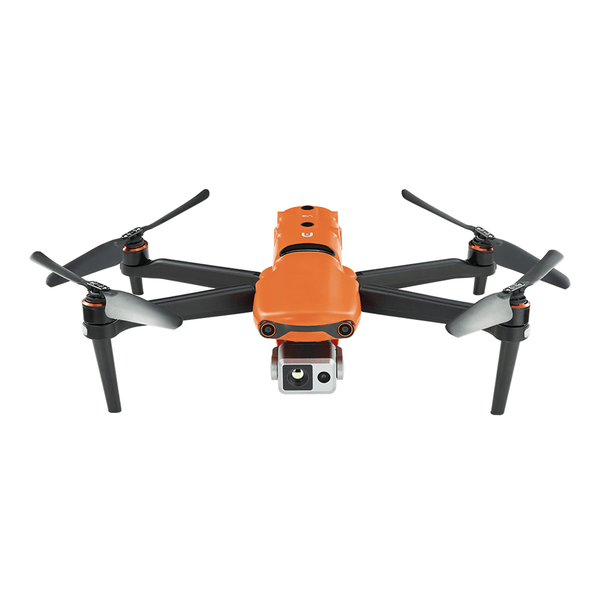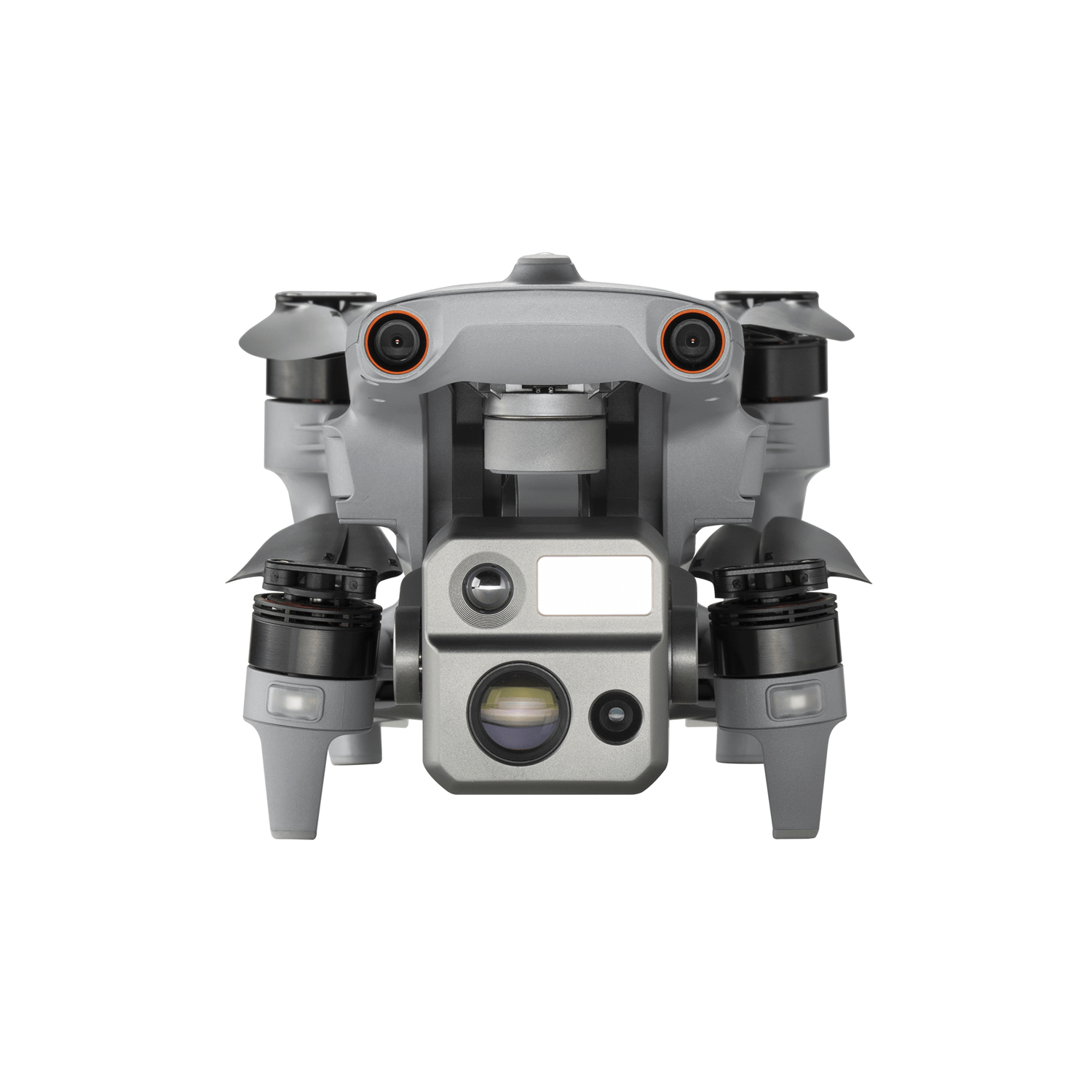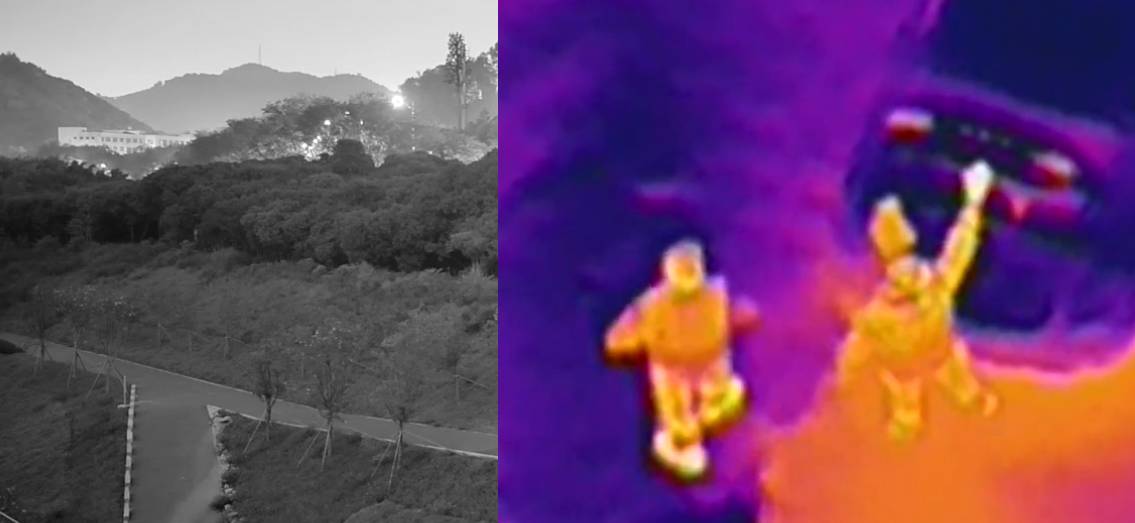Commercial drones often have higher-definition cameras and higher-performance sensors, which make it possible for drones to work at night. The drones that are best suited for night work are usually equipped with thermal imaging or starlight cameras. Here we will compare the starlight camera drone and thermal camera drone.
Thermal Imaging Drone
Thermal imaging works by detecting the thermal energy or thermal signature naturally emitted by animate and inanimate objects. A thermal imaging camera is equipped with a highly sophisticated lens and sensor system that allows invisible infrared frequencies to pass through, allowing it to measure the surface temperature of an object. An image processor uses the resulting data to create so-called thermograms, or color maps showing different temperature values.
For public safety and search and rescue teams, the ground and ambient temperatures cool down at night after the sun goes down, while the bodies of missing people warm up. It is this detectable thermal difference that makes thermal imaging drones such an important night vision solution.
Although a thermal camera is highly sensitive, it is affected by several factors such as time of day, surface conditions and reflectivity of objects.

Autel Robotics EVO II Dual 640T V3 Thermal Drone Rugged Bundle
$4799.00 USD
Starlight Camera Drone
The starlight sensor works by collecting any small amount of light at night from sources such as starlight or moonlight and amplifying it for better vision.
In the past, night vision cameras with starlight sensors used a technology called electro-optical image enhancement. Here, light passes through a series of lenses and an image intensifier tube, which converts incoming photons into electrons. Those electrons then hit a phosphor-coated screen, creating the characteristic green glowing image you might see in spy movies or games like Call of Duty.
Modern starlight sensors utilize a technique called digital image enhancement, which is an updated version of traditional light amplification. In digital image enhancement, CMOS sensors are used to convert light into digital signals. These signals are then electronically enhanced and magnified several times for clarity before being projected onto a screen as a visible light image.
Starlight sensors have wider apertures and slower shutter speeds so that more light can reach the camera. These sensors work with algorithms that suppress image noise and improve image quality. Night vision drones use digital image enhancement as it allows for more compact, lighter and versatile payloads.

Autel Robotics EVO Max 4N
$12,599.00 USD
Unlock New Night Time Capability
Temperature

Thermal Camera: Infrared cameras are limited by the temperature difference between the target and its surrounding environment.
Starlight Vision Camera: Accurately identifying targets at night with traditional thermal cameras can be very difficult. This usually occurs immediately after sunset in high-temperature environments or when the ground and the human body have similar temperatures. The EVO Max 4N is equipped with an Starlight Vision Camera which is not restricted by lighting conditions or temperature differences.
Glass

Thermal Camera: Nighttime reconnaissance through glass is obstructed.
Starlight Vision Camera:The EVO Max 4N enables observation through glass obstructions, making features of targets inside vehicles or buildings distinctly visible.
Detection Range

Thermal Camera: Conventional infrared cameras cannot conduct long-range reconnaissance of targets at night.
Starlight Vision Camera: The EVO Max 4N can effortlessly detect light sources like cellphones or car lights 5 km* or more in dark and open environments, enabling long-range and covert aerial reconnaissance.
Stealth

Wide-Angle camera: Nighttime illumination compromises privacy.
Starlight Vision Camera: Compared to infrared or laser illumination-based night vision reconnaissance solutions, the EVO Max 4N offers greater reconnaissance range and enhanced stealth, significantly reducing the risk of detection and counter-surveillance.
Target Positioning

Thermal Camera: Low-light visibility issues during nighttime operations.
Starlight Vision Camera: When ground team members wear night vision goggles, they can utilize laser signals projected by the UAV's laser rangefinder to pinpoint marked locations, enabling precise target positioning and effectively enhancing communication.
Communication

Thermal Camera: Challenges in marking and positioning for public safety.
Starlight Vision Camera:In public safety scenarios, beacons and laser pointers can serve as target markers, helping UAVs efficiently identify team members and improve positioning accuracy.
In conclusion
In the Autel drone series, thermal imaging drones are the first choice for Autel EVO II Dual 640T series, and starlight camera drones are the first choice for Autel EVO MAX 4N. Thermal imaging drones and starlight camera drones provide conditions for drone night vision, and also provide new clarity at night for first responders, law enforcement agencies, inspectors, and wildlife protection teams to perform 24/7 missions.
Thermal Camera vs. Starlight Vision Camera's representative drones: Autel EVO II 640T V3 VS EVO MAX 4N.








